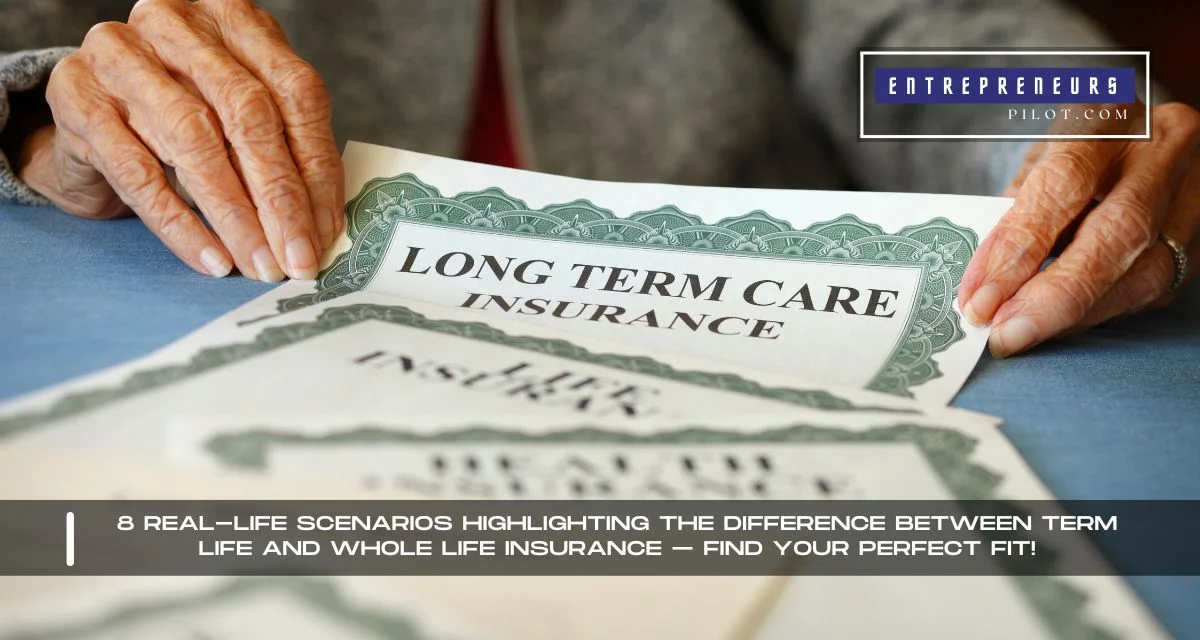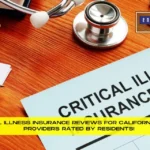Introduction
Choosing the right life insurance can feel like navigating a maze with no clear exit. But what if you had a map that highlighted the Difference Between Term Life And Whole Life Insurance in a way that spoke directly to your life’s needs? Imagine understanding which path to take through real-life scenarios that mirror your own experiences.
Whether you’re planning for the future, securing your family’s financial stability, or investing in your legacy, this guide is your first step toward making an informed decision. Dive into these eight real-life scenarios to discover your perfect fit in the complex world of life insurance. Let’s embark on this journey together, unraveling the mysteries of term and whole life insurance, and find the peace of mind you’ve been searching for.
Table of Contents
1. The Young Professional
Scenario: Meet Alex, a 28-year-old with a burgeoning career and dreams as big as their ambitions. Alex is debt-free and has no dependents but understands the importance of early financial planning.
Term Life Insurance: Ideal for Alex, offering affordable coverage with premiums that won’t dent their burgeoning savings. It provides a safety net during these foundational years without a lifelong commitment.
Whole Life Insurance: It might seem premature for Alex’s current needs. However, starting whole life now locks in lower rates and begins building cash value early, a smart long-term investment.
- For Expert Financial Insights And Guidance, You Can Visit Our Sister Site – ArabsGeek.com Now!
- Curiosity Piqued? Dive Into the Most Captivating Financial Content by Visiting Our Homepage!
- Unlock Exclusive Business Opportunities! 🚀 Connect with Us Now at our Email: [email protected]!
2. The New Parents
Scenario: Jordan and Casey just welcomed their first child. Their world now revolves around this new life, and ensuring their child’s future security is paramount.
Term Life Insurance: Offers a substantial coverage amount during these critical years at a manageable cost. It can cover the child’s dependent years, ensuring financial stability in case of the unimaginable.
Whole Life Insurance: Provides not only a death benefit but also a growing cash value that Jordan and Casey can borrow against for future expenses like college tuition, making it a dual-purpose financial tool.
3. The Established Family
Scenario: The Lee family, with two teenagers, owns a home and has a mix of short and long-term financial goals, including college tuition and retirement.
Term Life Insurance: Could cover specific financial obligations, like a 20-year mortgage or the kids’ education, ensuring these are not left unpaid.
Whole Life Insurance: Offers the Lees a secure way to leave a legacy for their children, with the added benefit of cash value that can supplement their retirement savings.
4. The Business Owner
Scenario: Sofia owns a small but thriving bakery. Her business is her passion, and she’s committed to its growth and the financial security of her employees.
Term Life Insurance: Provides affordable, temporary coverage that can be tailored to match her business loans, protecting her legacy and ensuring business continuity.
Whole Life Insurance: Acts as a financial safety net for Sofia, with the cash value component serving as an emergency fund or a source of funding for future business opportunities.
5. The Pre-Retiree
Scenario: At 55, Miguel is starting to think seriously about retirement. He has some savings but is looking for additional ways to secure his financial future.
Term Life Insurance: May not be the best fit for Miguel, given his age and the increasing costs of premiums for new term policies.
Whole Life Insurance: Offers Miguel a fixed premium and a death benefit, with the bonus of accruing cash value that could augment his retirement income, making it a wise choice at this life stage.
6. The Empty Nesters
Scenario: Nora and Lee’s children have grown and left home. They’re now looking at their next life chapter, focusing on their passions and perhaps downsizing their home.
Term Life Insurance: Might not be as critical now, given their reduced financial obligations. However, a small term policy could cover final expenses without breaking the bank.
Whole Life Insurance: Continues to offer Nora and Lee peace of mind, with the added benefit of accessing the policy’s cash value to enjoy their hobbies or travel.
7. The High-Net-Worth Individual
Scenario: Elijah, a successful entrepreneur, has a complex financial portfolio and is concerned about estate planning and tax implications for his heirs.
Term Life Insurance: While useful, might not fully meet Elijah’s needs given his focus on legacy and estate planning.
Whole Life Insurance: Offers a strategic tool for Elijah, providing a tax-efficient way to transfer wealth to his heirs while also offering the potential for cash value growth during his lifetime.
8. The Philanthropist
Scenario: Maria has a lifelong commitment to charitable giving. She wants to ensure her philanthropic efforts continue beyond her lifetime.
Term Life Insurance: Could be used to guarantee a significant donation to her chosen charity upon her death, within the policy term.
Whole Life Insurance: Not only secures Maria’s legacy through a guaranteed death benefit but also allows her to potentially increase her giving through the policy’s cash value component.
Conclusion
The journey through the differences between term life and whole life insurance reveals that the best choice depends on individual circumstances, goals, and stages in life. Whether you’re a young professional just starting out, a new parent safeguarding your family’s future, or an individual planning for retirement and beyond, there’s a life insurance policy that fits your unique needs.
Understanding the nuances of each option allows you to make an informed decision, ensuring that you and your loved ones are protected, come what may. Take the time to assess your situation, consult with a financial advisor, and choose the path that not only offers peace of mind but also aligns with your long-term financial strategy.
Frequently Asked Questions
1. Can I convert my term life insurance policy to a whole life insurance policy?
Yes, many term life insurance policies come with a conversion option that allows you to convert to a whole life policy within a specified period, without undergoing additional medical underwriting.
2. Is the cash value of whole life insurance taxable?
The cash value grows on a tax-deferred basis, meaning you won’t pay taxes on the growth while it remains in the policy. Taxes may be applicable if you withdraw more than your basis in the policy.
3. Can I have both term and whole life insurance policies?
Absolutely. Many individuals choose to have both to cover different needs and financial goals, using term life for temporary, larger coverage needs and whole life for permanent coverage and cash value benefits.
4. How do I determine the amount of life insurance I need?
Consider your financial obligations, future goals, and the needs of your dependents. A common approach is to multiply your annual income by 10-15 times, but you should also account for debts, education costs, and any other future financial needs.
5. Does whole life insurance make sense for everyone?
Whole life insurance is not a one-size-fits-all solution. It’s best suited for those looking for lifelong coverage, have the financial means for the higher premiums, and are interested in the policy’s cash value component for investment or estate planning purposes.











